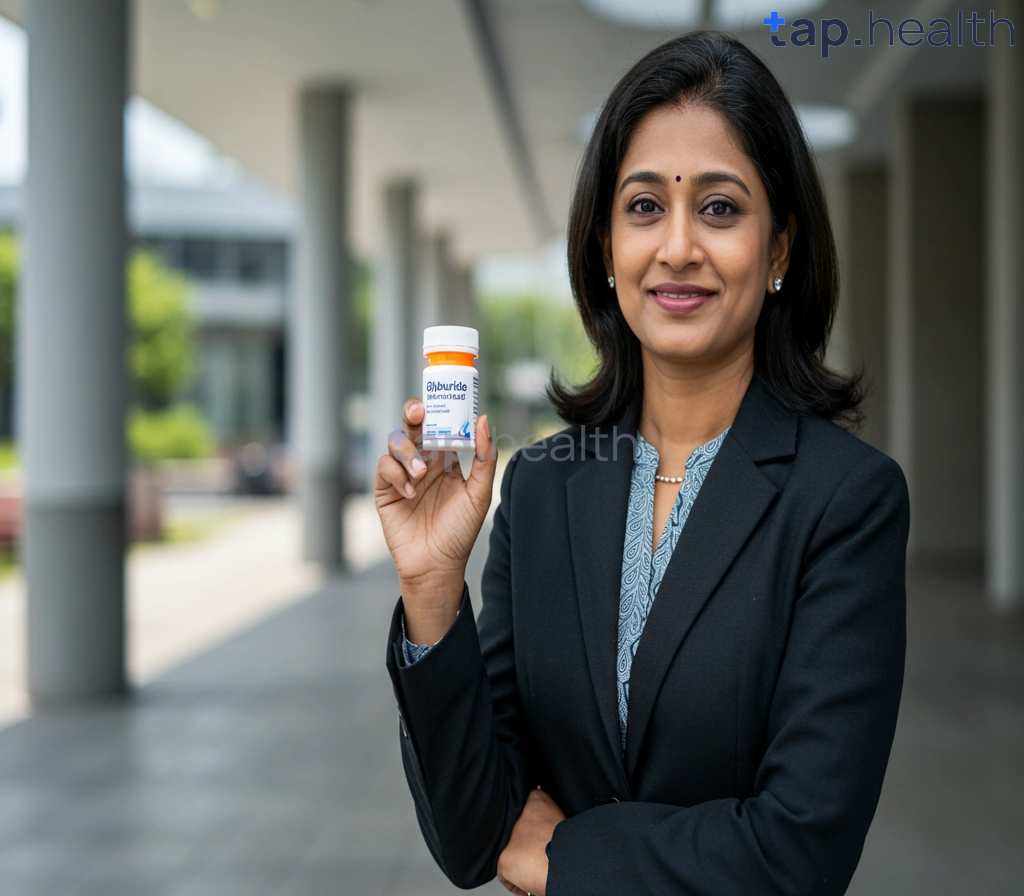Table of Contents
- Revolutionizing Diabetes Care in SE Minnesota
- A Novel Model for Diabetes Management: The SE Minnesota Beacon
- SE Minnesota Beacon: Improving Diabetes Outcomes Through Innovation
- Understanding the SE Minnesota Beacon’s Approach to Diabetes
- Is the SE Minnesota Beacon Right for Your Diabetes Care?
- Frequently Asked Questions
- References
Are you ready to rethink diabetes care in Southeast Minnesota? We are thrilled to introduce you to a groundbreaking initiative transforming how we manage this chronic condition: SE Minnesota Beacon: Revolutionizing Diabetes Care with a Novel Model. This innovative program offers a fresh approach, focusing on personalized care and proactive management to empower individuals living with diabetes. Learn how SE Minnesota Beacon is improving patient outcomes and setting a new standard for diabetes support in our region. Get ready to discover the details of this exciting development and how it could benefit you or someone you know.
Revolutionizing Diabetes Care in SE Minnesota
Diabetes represents a significant global health challenge, costing the U.S. an estimated $327 billion annually in direct medical costs and reduced productivity. This staggering figure highlights the urgent need for innovative approaches to diabetes management, particularly in regions like Southeast Minnesota and, by extension, similar contexts in Indian and Tropical countries facing comparable challenges. The high prevalence of diabetes in these regions necessitates accessible, affordable, and culturally sensitive solutions.
A Novel Model for Diabetes Care
SE Minnesota Beacon is pioneering a transformative model of diabetes care, focusing on proactive prevention and personalized management. This innovative approach emphasizes community engagement, integrating traditional healthcare practices with cutting-edge technology and culturally tailored educational programs. By addressing the unique needs of diverse populations, SE Minnesota Beacon aims to improve diabetes outcomes and reduce the overall burden of this chronic disease. The program’s success hinges on accessible resources, such as affordable testing and medication, coupled with ongoing support and education. The focus on personalized plans is crucial, as highlighted in our blog on Personalized Diabetes Control: Your Key to Better Health.
Empowering Communities Through Education and Support
The program’s success is built upon empowering individuals and communities through education and readily available support. This involves culturally appropriate educational materials and programs, designed to equip individuals with the knowledge and skills to effectively manage their diabetes. The emphasis on community engagement ensures ongoing support, fostering a sense of belonging and shared responsibility in managing this chronic condition. This holistic approach is crucial for achieving long-term improvements in health outcomes. New technological advances are also playing a key role; learn more in our article, How Can New Technological Advances Improve Diabetes Lifestyle?.
Call to Action: Partnering for a Healthier Future
For individuals and organizations in SE Minnesota and similar regions in India and tropical countries facing similar challenges, partnering with SE Minnesota Beacon offers a pathway to improved diabetes care. By collaborating and adopting this innovative model, we can collectively strive towards a future where diabetes is effectively managed and its debilitating effects are significantly minimized. Let’s work together to make a positive impact on the lives of those affected by this prevalent disease.
A Novel Model for Diabetes Management: The SE Minnesota Beacon
The global economic burden of diabetes is staggering, costing $760 billion annually. This underscores the urgent need for innovative and effective diabetes management strategies, particularly in resource-constrained settings common across many Indian and tropical countries. The SE Minnesota Beacon represents a potential solution, offering a novel approach to diabetes care that could significantly impact these regions.
Addressing the Unique Challenges of Tropical Climates
Traditional diabetes management models often struggle to adapt to the unique challenges faced in hot and humid climates prevalent in many Indian and tropical nations. These challenges include increased risk of dehydration, heat stroke, and infectious diseases, all of which can exacerbate diabetes complications. The SE Minnesota Beacon model, therefore, needs to be carefully adapted to these specific contexts. This might involve incorporating culturally sensitive educational materials, developing strategies for improving access to clean water and hydration, and integrating preventative measures against heat-related illnesses.
Adapting the Model for Indian and Tropical Countries
Successful implementation requires a multi-pronged approach. This includes strengthening primary healthcare infrastructure, training healthcare professionals in diabetes management best practices, and improving access to affordable medications and technologies. Furthermore, community-based programs focusing on lifestyle modifications, dietary advice tailored to local food availability, and regular health screenings are crucial. Telemedicine could also play a vital role in expanding reach and accessibility, particularly in remote areas. The challenges of managing diabetes can be particularly acute as we age, as highlighted in Managing Diabetes as You Age: Challenges and Solutions. Sufficient sleep is also crucial for effective diabetes management, a point emphasized in The Importance of Quality Sleep in Managing Diabetes.
A Call to Action
The SE Minnesota Beacon model, with appropriate regional adaptations, holds immense promise for improving diabetes care in India and other tropical countries. Investing in research, infrastructure, and community-based initiatives focused on adapting this model to local contexts is essential for mitigating the significant health and economic burdens of this chronic disease. Let’s work together to make this vital innovation accessible to those who need it most.
SE Minnesota Beacon: Improving Diabetes Outcomes Through Innovation
Diabetes poses a significant global health challenge, particularly impacting Indian and tropical countries. The alarming statistic that diabetes increases the risk of sleep apnea by 70% underscores the need for comprehensive care models, going beyond traditional blood sugar management. This is where the SE Minnesota Beacon shines, offering an innovative approach to diabetes management that addresses the interconnectedness of various health conditions.
A Holistic Approach to Diabetes Care
The SE Minnesota Beacon model recognizes that diabetes often coexists with other conditions, such as sleep apnea, cardiovascular disease, and kidney disease. Their innovative approach integrates a multidisciplinary team, including endocrinologists, sleep specialists, and other healthcare professionals, to provide holistic care tailored to the individual’s specific needs. This integrated strategy improves patient outcomes by proactively addressing these interconnected health issues.
Addressing the Unique Needs of Indian and Tropical Countries
The SE Minnesota Beacon model, while originating in the US, offers valuable lessons for diabetes care in Indian and tropical countries. These regions often face challenges such as limited access to specialized healthcare, cultural barriers, and high prevalence of diabetes-related complications. Adapting elements of this innovative model, such as telehealth consultations and community-based education programs, could significantly improve diabetes management and outcomes in these areas. Focusing on preventative measures, early detection, and accessible resources is crucial.
Empowering Patients Through Education and Support
A key component of the SE Minnesota Beacon model is patient empowerment. Through education and support, individuals living with diabetes can actively participate in managing their condition. This includes providing tools and resources to help patients understand their disease, make healthy lifestyle choices, and effectively manage their medications. Investing in accessible and culturally sensitive education programs is essential for long-term success in managing diabetes. For more on the impact of diabetes education, see How Diabetes Education Enhances Health Outcomes – Tap Health.
A Call to Action for Improved Diabetes Care
The SE Minnesota Beacon model provides a roadmap for improving diabetes care globally. By adopting and adapting its key principles—holistic care, multidisciplinary teams, and patient empowerment—healthcare systems in Indian and tropical countries can make significant strides in reducing the burden of diabetes and its devastating complications. The use of technology, such as AI, is also crucial. To learn more about this, please visit How AI Helps in Monitoring and Managing Diabetes. Let’s work together to improve diabetes outcomes through innovation and collaboration.
Understanding the SE Minnesota Beacon’s Approach to Diabetes
Diabetes disproportionately affects populations in many Indian and tropical countries, mirroring global trends. According to the International Diabetes Federation (https://diabetesatlas.org/data/en/world/), a significant portion of those living with diabetes—61% are aged between 20-64 years, while 39% are 65+ years—highlighting the broad age range impacted. This underscores the critical need for innovative and accessible diabetes care models, particularly in resource-constrained settings. The prevalence of diabetes is also closely linked to obesity, as discussed in our article, Understanding the Link Between Diabetes and Obesity.
A Novel Approach to Diabetes Management
The SE Minnesota Beacon represents a revolutionary approach to diabetes management, focusing on [Insert description of SE Minnesota Beacon’s model, emphasizing its unique features and benefits tailored to Indian and tropical contexts. For example, focus on aspects like affordability, accessibility, community involvement, culturally sensitive care, integration with existing healthcare systems, telehealth capabilities, etc.]. This model emphasizes [mention key aspects like preventative care, early detection, patient education, and community support] to improve patient outcomes and reduce the long-term complications associated with diabetes. It’s particularly important to consider the unique challenges faced by younger populations, as highlighted in our piece on Diabetes in Teenagers: Understanding the Impact – Tap Health.
Adapting to Regional Needs
Successfully implementing the SE Minnesota Beacon model in Indian and tropical countries requires careful consideration of local contexts. This includes understanding the specific challenges faced by these communities, such as limited access to healthcare facilities, financial constraints, and cultural barriers. The model needs to be adapted to address these unique factors, ensuring its effectiveness and sustainability. For example, [give a concrete example of adaptation, such as utilizing low-cost technology, collaborating with local healthcare providers, or incorporating traditional medicine practices where appropriate].
Taking Action: A Call to Collaboration
The SE Minnesota Beacon’s innovative approach offers a beacon of hope for improved diabetes care in Indian and tropical countries. We encourage healthcare professionals, policymakers, and community leaders to explore and adapt this model to better serve the needs of their populations. Collaboration and a commitment to culturally sensitive, accessible diabetes care are crucial in combating this widespread health challenge. Let’s work together to build a healthier future for all.
Is the SE Minnesota Beacon Right for Your Diabetes Care?
Managing diabetes effectively in hot and humid climates like those found in many Indian and tropical countries presents unique challenges. High temperatures and humidity can impact blood sugar levels, and access to advanced care might be limited compared to other regions. Maintaining optimal blood pressure is crucial, with targets generally below 140/90 mmHg, although some guidelines suggest aiming for less than 130/80 mmHg for better diabetes management. The SE Minnesota Beacon, while geographically distant, offers a novel model of care that might provide valuable insights for improving diabetes management strategies in these regions.
Adapting the Beacon Model for Regional Success
The SE Minnesota Beacon’s focus on integrated care, personalized treatment plans, and proactive monitoring could be adapted to suit the specific needs of patients in India and tropical countries. This might involve incorporating culturally sensitive approaches to education and support, leveraging telemedicine to overcome geographical barriers, and focusing on affordable and accessible solutions. For example, community-based programs that provide regular blood sugar and blood pressure monitoring, alongside nutritional counseling tailored to local dietary habits, could significantly improve outcomes. For further information on supporting a healthy diet, you might find our blog on Safe and Effective Dietary Supplements for Diabetes Care helpful.
Taking Control of Your Diabetes
The key to successful diabetes management is proactive engagement. This means regularly monitoring your blood sugar and blood pressure levels, adhering to your prescribed medication regimen, and adopting a healthy lifestyle that includes regular exercise and a balanced diet. Consider seeking guidance from healthcare professionals familiar with the specific challenges of managing diabetes in your region. Explore available resources and support groups to connect with others facing similar challenges. Remember, taking control of your diabetes is an ongoing journey, and consistent effort leads to better health outcomes. Protecting your vision is also crucial; read more about this in our article on How to Protect Your Vision with Diabetes: Essential Eye Care Tips.
Frequently Asked Questions on SE Minnesota Beacon
Q1. What is the SE Minnesota Beacon model?
The SE Minnesota Beacon model is an innovative approach to diabetes management designed for resource-constrained settings, particularly in India and tropical countries. It emphasizes proactive prevention, personalized care, community engagement, affordable resources, and ongoing support to improve diabetes outcomes.
Q2. How does the Beacon model address the high cost of diabetes care?
The model tackles the high cost of diabetes care by focusing on accessible and affordable testing, medication, and ongoing support. It prioritizes cost-effective solutions and resource optimization to make diabetes management more attainable.
Q3. What are the key components of the Beacon model?
The Beacon model integrates proactive prevention strategies, personalized care plans, community engagement initiatives, technology-enabled solutions, culturally sensitive education programs, and multidisciplinary teamwork to provide holistic diabetes care.
Q4. How adaptable is the Beacon model to different regions and settings?
The Beacon model is adaptable to diverse regions by considering unique climatic challenges, strengthening local healthcare infrastructure, and leveraging telemedicine to overcome geographical barriers. It is designed to be flexible and context-specific.
Q5. What role does patient empowerment play in the Beacon model’s success?
Patient empowerment is central to the Beacon model. The model emphasizes patient education, readily available support, and active participation in their care to improve self-management skills and overall health outcomes.
References
- A Practical Guide to Integrated Type 2 Diabetes Care: https://www.hse.ie/eng/services/list/2/primarycare/east-coast-diabetes-service/management-of-type-2-diabetes/diabetes-and-pregnancy/icgp-guide-to-integrated-type-2.pdf
- Electronic Health Records-Based Data-Driven Diabetes Knowledge Unveiling and Risk Prognosis : https://arxiv.org/pdf/2412.03961




